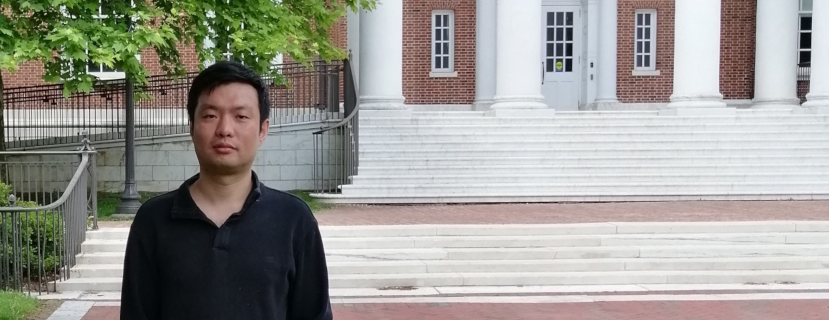
WANG Cheng
PhD, Principal investigator
Investigate neural underpinnings of episodic memory and spatial navigation
Research
We are interested in the following two questions:(1)How are the episodic memory system constructed? (2) How the stored experiences are used to guide future behavior? The hippocampus and its neighboring brain areas, together referred to as medial temporal lobe, plays a key role in episodic memory processes. The “cognitive map theory” has been proposed as a framework to organize and understand the numerous anatomical, behavioral, and physiological findings. Its central claims includes: The hippocampus is the core of a neural memory system providing an objective spatial framework within which the items and events of an organism’s experience are located and interrelated. Since the breakthrough discovery of grid cells in the medial entorhinal cortex (MEC), the general wisdom is that MEC provides the hippocampus with the necessary spatial signal. However, the behavioral correlates of the cells in the lateral entorhinal cortex (LEC), which, together with MEC, constitute the main cortical gateways to the hippocampus, are largely unexplored. We found that LEC neurons encode egocentric information about external items, such as the boundaries of the environment and 3D objects. Our future research will focus on: (1) How does information about external items interface with the hippocampal spatial representation? (2) The transformation between egocentric and allocentric information.
Biography
Employment2019-present Principal Investigator,
Shenzhen Institutes of Advanced Technology,
Chinese Academy of Sciences,
Shenzhen, China
2018-2019 Assistant Research Scientist,
The Zanvyl Krieger Mind/Brain Institute,
Johns Hopkins University,
Baltimore, USA
2011-2018 Postdoctoral Fellow,
The Zanvyl Krieger Mind/Brain Institute,
Johns Hopkins University,
Baltimore, USA
Education
2005-2011 Ph.D. in Neurobiology,
Institute of Neuroscience,
Chinese Academy of Sciences,
Shanghai, China
2001-2005 B.S. in Biology,
Shandong University,
Jinan, China
Selected publications
1.Spatial firing properties of the lateral entorhinal cortex on a one-dimensional track. Cheng Wang, Heekyung Lee, Geeta Rao, James J. Knierim. In preparation.2.Deep-layer LEC neurons convey slightly more spatial information than superficial-layer neurons in open-field foraging tasks. Cheng Wang, Heekyung Lee, Geeta Rao, James J. Knierim. In preparation.
3.Egocentric coding of external items in the lateral entorhinal cortex. Cheng Wang#, Xiaojing Chen#, Heekyung Lee, Sachin S. Deshmukh, D. Yoganarasimha, Francesco Savelli, James J. Knierim. Science, 2018, Nov; 362(6417):945-949. #, co-first author.
4.Integrating time from experience in the lateral entorhinal cortex. Albert Tsao, Jorgen Sugar, Li Lu, Cheng Wang, James J. Knierim, May-Britt Moser, Edvard I. Moser. Nature, 2018, Sep; 561(7721):57-62.
5.F1000Prime Recommendation of [Terada S et al., Neuron 2017 94(6):1248-1262.e4]. James J. Knierim, Cheng Wang. F1000Prime, 23 Aug 2017; 10.3410/f.727705762.793535523
6.Spatial representations of granule cells and mossy cells of the dentate gyrus. Douglas GoodSmith#, Xiaojing Chen#, Cheng Wang, Sang Hoon Kim, Hongjun Song, Andrea Burgalossi, Kimberly M. Christian, James J. Knierim. Neuron, 2017, Feb 8; 93(3):677-690. #, co-first author.
7.F1000Prime Recommendation of [Bittner KC et al., Nat Neurosci 2015 18(8):1133-1142]. James J. Knierim, Cheng Wang. F1000Prime, 12 Feb 2016; 10.3410/f.725633857.793514361.
8.Neural population evidence of functional heterogeneity along the CA3 transverse axis: pattern completion versus pattern separation. Heekyung Lee#, Cheng Wang#, Sachin S. Deshmukh, James J. Knierim. Neuron, 2015, Sep 2; 87(5):1093-1105. #, co-first author.
9.Sensitivity of V1 neurons to direction of spectral motion. Cheng Wang, Haishan Yao. Cerebral Cortex, 2011 Apr; 21(4):964-73.

